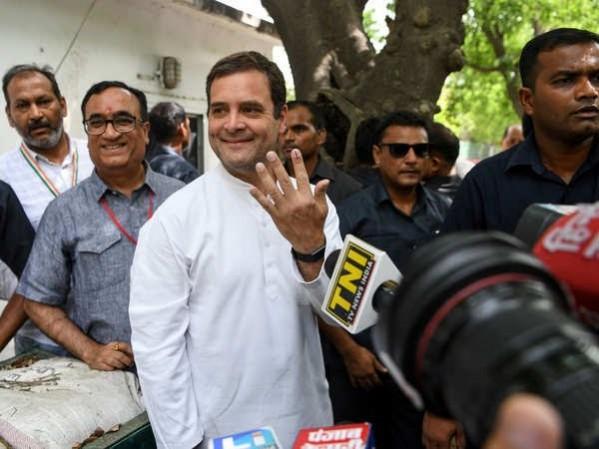
Exit polls have predicted the return of Prime Minister Narendra Modi to power, sending the markets into a tizzy. The huge majority expected for the Bharatiya Janata Party (BJP)-led National Democratic Alliance (NDA) has spurred the stock markets to new highs. Traders hope that the prospect of the installation of a market-friendly government will bring back the foreign portfolio investors (FPI) that had taken flight during the six-week-long seven-phase election process.
The markets are likely to price in the euphoria ahead of the May 23 counting and there is a chance of the volatility peaking. The election outcome is likely to emerge only in a day or two after the counting begins because of the delay in matching the VVPAT (voter-verified paper audit trail) slips with the EVM (electronic voting machine) numbers.
The exit polls predict that the NDA could win between 267 and 354 seats in the 543-member Lok Sabha. In contrast, the BJP-led NDA won 336 seats in 2014, as against 60 of the main opposition Congress party-led United Progressive Alliance (UPA) that is projecting Rahul Gandhi as its prime minister candidate. The mish-mash of regional parties and the left outfits won 147 seats in 2014.
But the political observers have been right in cautioning the market to temper the euphoria that the exit polls have triggered. They cite the euphoria created by the exit poll predictions of 2004 after the Atal Bihari Vajpayee-led BJP mounted the India Shining campaign. Most major exit polls then suggested that the NDA would come back to power with a wide lead over the Congress-led alliance.

Of course, the figures that the surveys threw up then were much moderate than the 2019 exit polls. Only Sahara DRS and Star News Cvoter surveys placed NDA beyond the half-way mark of 272 seats. Sahara DRS poll projected a tally of 278 seats for NDA against 181 for the UPA, while Star News CVoter survey gave the NDA 275 seats and UPA 186. In fact, the average of five major surveys predicted 260 seats for the BJP-led front and 188 for the UPA. However, the NDA ended up with 189 seats against the UPA's 225. The rest is history with two stints of Manmohan Singh as prime minister until the 2014 Modi wave.
Some experts point out that exit polls would be closer to the actual results in a less emotionally charged election. This is because exit polls often reflect the voters' perception of the scenario rather than his or her actual preference. In an atmosphere that is extremely vitiated by the social media and massive campaigns, there is all the more a chance of the voters' perception being influenced by the last message that got imprinted in the memory.
Therefore, veteran traders suggest caution while trading the election news with tight stop-loss settings. The market could see some profit-taking ahead of the results on Thursday, especially after the single day surge of more than 1,400 points to close at 39,352 points of the Bombay Stock Exchange (BSE) benchmark Sensex and 400 points of the National Stock Exchange benchmark Nifty to close at 11,828 points taking the benchmark indices to shouting distances of all-time high points.
Of course, 2019 is not exactly 2004 and the combine of Prime Minister Modi and BJP president Amit Shah is not that of Vajpayee and LK Advani. The BJP's vote share has surged since 2004 and there is no denying that the party has spread into more areas with strong organizational buildups. Therefore, the exit polls this time could hit the bull's eye.









